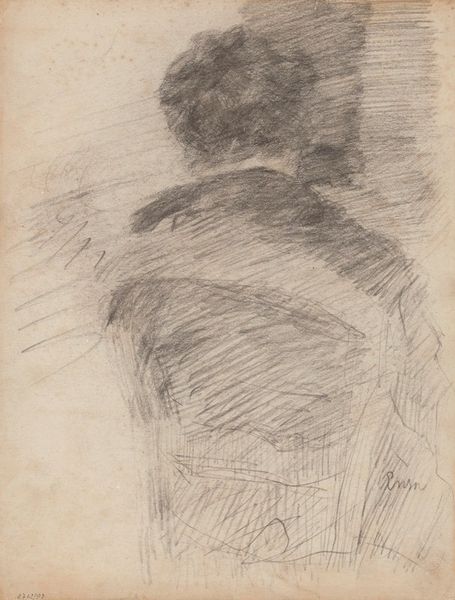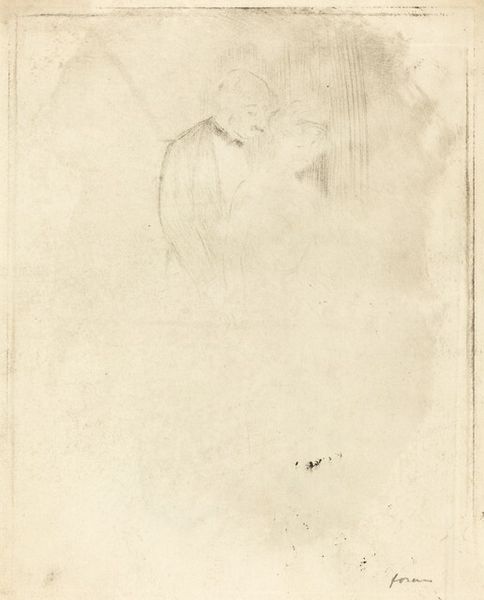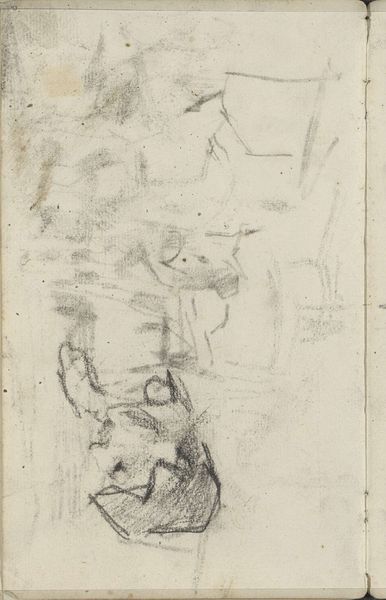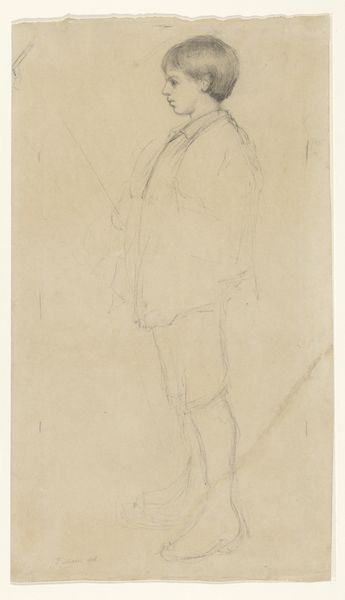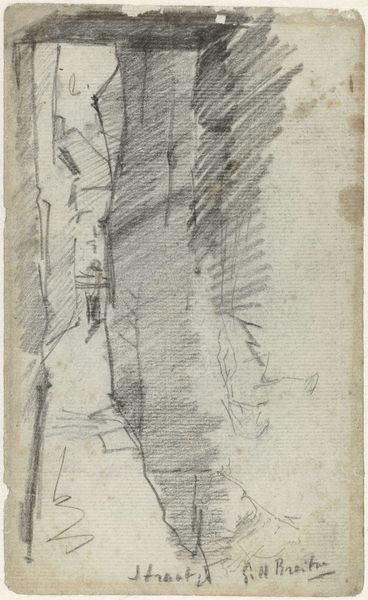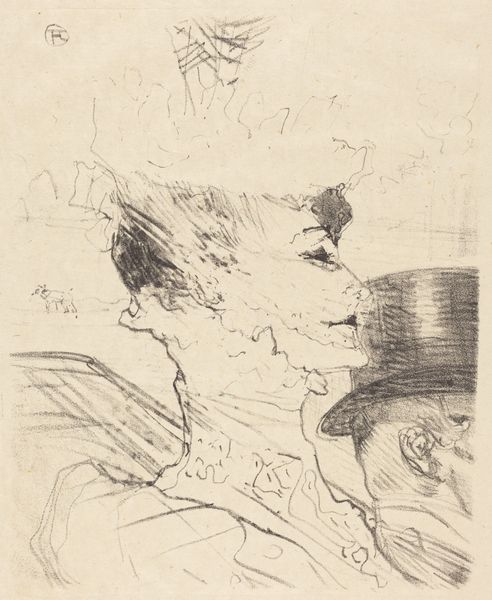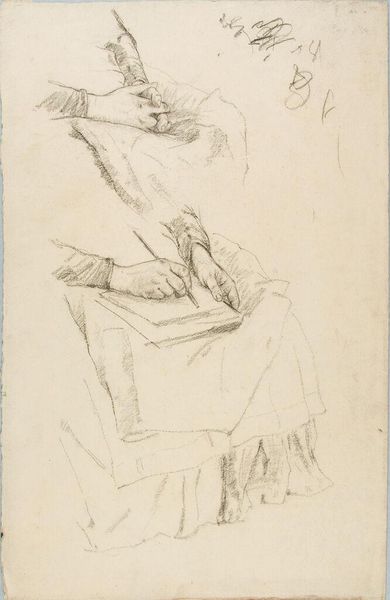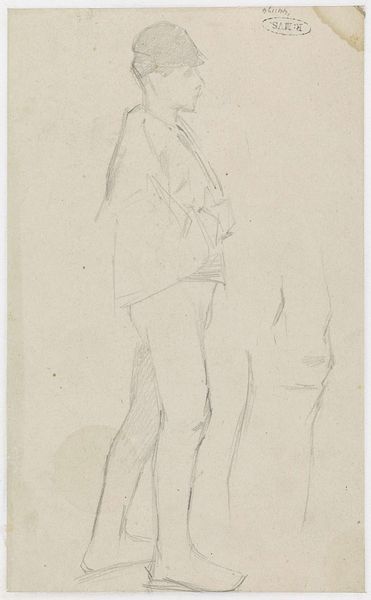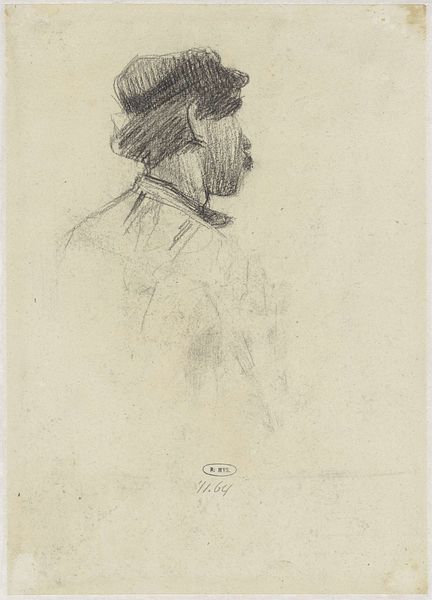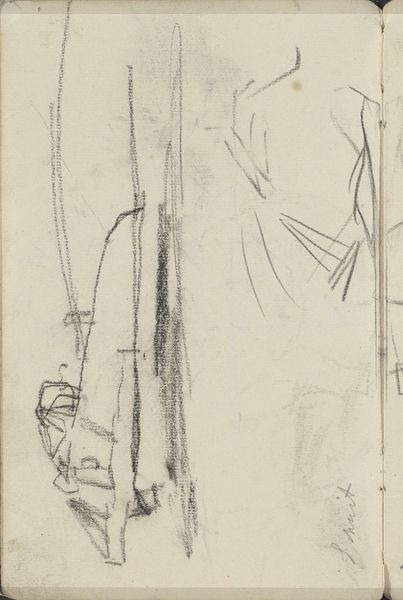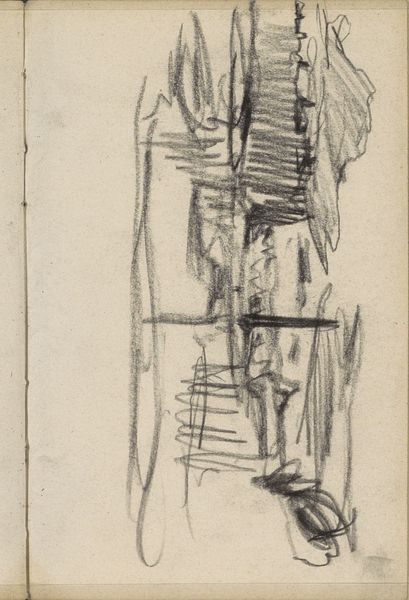
drawing, pencil
#
portrait
#
drawing
#
pencil
Copyright: Public Domain: Artvee
Editor: This pencil drawing is called "A Man and a Woman" by James Ensor, and its date is unknown. It looks like a quick study of two figures. The man is heavily shaded and seems quite solid, while the woman is very lightly sketched. What stands out to you about this drawing? Curator: I notice how Ensor juxtaposes these two figures using such contrasting techniques. Considering Ensor's social circles and the era, it’s possible this drawing reflects prevailing societal power dynamics. The man is dense, dominating the composition. Does his solidity signify his social standing or perhaps represent established patriarchal structures? And the woman, ethereal and less defined… is she perhaps illustrative of women's more fragile place in society at that time? Editor: That’s interesting, I hadn’t considered the possible commentary on social standing. So, the way he renders the figures speaks to something beyond just their physical appearances? Curator: Exactly. Consider that art production and patronage during Ensor's time were influenced by class structures and societal expectations. An artist's choice to depict figures in a certain way often carries coded messages that resonate with or critique these power dynamics. Is this just a study, or is Ensor making a subtle, yet pointed observation about societal roles? Who was his target audience here? Was he perhaps speaking more to himself? These are questions we need to address to analyze the full cultural picture behind this work. Editor: Wow, looking at it now, it does seem like there's more going on than meets the eye. I will try to always think more about the socio-political context that influenced the artworks, thank you. Curator: That's a great takeaway. Art never exists in a vacuum!
Comments
No comments
Be the first to comment and join the conversation on the ultimate creative platform.
